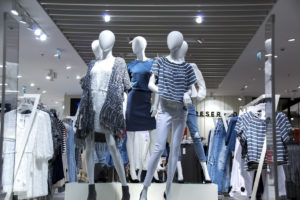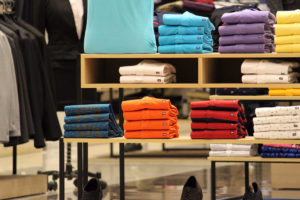 It’s that time of year when all store owners and managers start to make personnel decisions. Remember those people you hired in late August, maybe in September or even as late as October or November? Remember the conversations you may have had with them discussing how this was a “seasonal” position? You may have really dangled the carrot in front of them and told them that if they worked hard and showed initiative they might be retained on your staff after the holidays. Guess what? It’s time now for you to start taking a hard look at your staff and making some decisions and that isn’t always pleasant. Now you have to evaluate those employees and consider whether you want to keep them or you may have to decide if you can afford to keep them. What should you be thinking about at this point with regard to employee retention decisions?
It’s that time of year when all store owners and managers start to make personnel decisions. Remember those people you hired in late August, maybe in September or even as late as October or November? Remember the conversations you may have had with them discussing how this was a “seasonal” position? You may have really dangled the carrot in front of them and told them that if they worked hard and showed initiative they might be retained on your staff after the holidays. Guess what? It’s time now for you to start taking a hard look at your staff and making some decisions and that isn’t always pleasant. Now you have to evaluate those employees and consider whether you want to keep them or you may have to decide if you can afford to keep them. What should you be thinking about at this point with regard to employee retention decisions?
Performance
You may have told the employee that retention after the holiday season would be based on their performance. Did you take time periodically to watch how this person interacted with customers or other employees? Did you ever get any customer complaints about how this employee treated them or compliments about their service? Did you keep track of those complaints or compliments so you would have something to fall back on should you choose to end their employment? Having documentation in hand makes it easier to have those conversations. The other resources you need to rely on are your supervisors. It is wise to have a management meeting to discuss each person’s opinion about a seasonal worker. One person may like the way the employee performed on a cash register while another had issues with sales floor performance. Getting several perspectives will give a better picture of an employee during the season.
Punctuality
Review an employee’s time sheets or attendance record. If you don’t keep track of tardiness or call-outs you should start. Just because a supervisor or manager says someone was always late or always called out does not mean it was so. It often happens that during a busy time or when everything seems to be going wrong that if someone shows up late to work it is inflated in our minds. We are prone to feeling like this is a regular occurrence when in fact it only took place the one time. The employee may have called out another time but the heat of the moment distorts the reality of the employee’s attendance record. Review documentation so you know whether punctuality or attendance was really a problem.
Attitude
I shouldn’t have to include this one but sometimes the obvious isn’t so obvious. What kind of attitude was displayed while this person worked? Did they arrive to work with a negative attitude? Perhaps they were always negative about customers or even talking about other employees. A poor attitude can rub off on others and become a drain on morale. I can’t emphasize enough the importance of getting rid of someone who displays a poor attitude. I should also mention that it is worth giving consideration to someone who always has a sunny disposition. Just as a negative attitude spreads a black cloud over the other workers and can be sensed by customers a positive attitude can have the same impact. Shoppers like feeling welcomed and that their business is appreciated. Co-workers enjoy being around a fellow employee who makes work fun or knows the value of a warm greeting. This does not mean this worker does not have to be able to perform but they may not need to be a superstar if they bring something of value to the table.
Honesty and Integrity
Has this staff member demonstrated an impeccable record of honest behaviors? Are you confident this person has proven to be honest? If you track register overages and shortages take a look back at this employee’s daily register tallies. Be sure there is no concern over shortages or overages either of which could be an indicator of theft. Has there been any question about a purchase or a package check inspection? Is this person always upfront about issues they have encountered? Even something as seemingly small as having a friend punch a time clock for them indicates an integrity issue at the least. If you have a concern it would be in your best interest to cut this person from your roster.
Ending a seasonal employee’s job isn’t always easy but it is necessary. Make sure you use sound criteria and good judgment when deciding if you will keep or release someone after the holidays.

 For many big retailers and the small mom and pop shop, the holidays are something to be excited about.
For many big retailers and the small mom and pop shop, the holidays are something to be excited about. Could it be that Santa Claus is not always a jolly, giving man? Oh yeah. Take a
Could it be that Santa Claus is not always a jolly, giving man? Oh yeah. Take a  The end of the holiday gift buying season ushers in the inevitable holiday gift return season. Clothes that don’t fit, ugly holiday sweaters no one really wanted, toys that were too old for a young child or too young for the older child all lead to returns, exchanges, and refunds. For those who have been in retail for any length of time, we know that many of these items will be returned without tags or a receipt and not even a gift receipt. It also means people will try to return merchandise to your store that was never even purchased there, despite what the customer in front of you says. This means it is prime time for those who engage in return fraud. There are so many people making returns that trying to separate legitimate refunds and exchanges from the fraudulent ones is difficult. There are steps you can take to minimize the number of fraudulent returns you accept.
The end of the holiday gift buying season ushers in the inevitable holiday gift return season. Clothes that don’t fit, ugly holiday sweaters no one really wanted, toys that were too old for a young child or too young for the older child all lead to returns, exchanges, and refunds. For those who have been in retail for any length of time, we know that many of these items will be returned without tags or a receipt and not even a gift receipt. It also means people will try to return merchandise to your store that was never even purchased there, despite what the customer in front of you says. This means it is prime time for those who engage in return fraud. There are so many people making returns that trying to separate legitimate refunds and exchanges from the fraudulent ones is difficult. There are steps you can take to minimize the number of fraudulent returns you accept. December is the month when retailers are focused on driving those end of the year sales. We push as much merchandise as possible out of the stockrooms to fill the floors. Empty salesfloor spaces should be “no-no’s” during this time of the year. We re-merchandise our fixtures to get gift ideas in front of our customers. We also take steps to increase impulse buys by filling check lanes with snacks, batteries, magazines, gift cards, etc. Managers should also be looking at last year sales information to plan schedules around peak times of the day in order to avoid long lines at the registers. While all of this is important it is just as important to start planning for your end of the year wrap up.
December is the month when retailers are focused on driving those end of the year sales. We push as much merchandise as possible out of the stockrooms to fill the floors. Empty salesfloor spaces should be “no-no’s” during this time of the year. We re-merchandise our fixtures to get gift ideas in front of our customers. We also take steps to increase impulse buys by filling check lanes with snacks, batteries, magazines, gift cards, etc. Managers should also be looking at last year sales information to plan schedules around peak times of the day in order to avoid long lines at the registers. While all of this is important it is just as important to start planning for your end of the year wrap up. A New Year is just around the corner and once again resolutions are going to be made and many of those will fall by the wayside. Why does that happen? Are goals too big to achieve? Sometimes we all start off with good intentions and we just get caught up in our normal routines and we can’t seem to focus on what it was we wanted to get done. There may be a manager out there who resolves that this is the year they will meet quarterly with each employee and discuss performance. They might do well the first quarter but then as the demands of the job take up more and more time something gives and it was the meetings. I recall one of my resolutions was to be more organized at work. I had a filing system, it was called my desktop and I knew where everything was at. I would make my resolution, create a filing system and you guessed it by the end of January I was back to my old habits. My intentions were good I just wouldn’t stay focused on it and made excuses.
A New Year is just around the corner and once again resolutions are going to be made and many of those will fall by the wayside. Why does that happen? Are goals too big to achieve? Sometimes we all start off with good intentions and we just get caught up in our normal routines and we can’t seem to focus on what it was we wanted to get done. There may be a manager out there who resolves that this is the year they will meet quarterly with each employee and discuss performance. They might do well the first quarter but then as the demands of the job take up more and more time something gives and it was the meetings. I recall one of my resolutions was to be more organized at work. I had a filing system, it was called my desktop and I knew where everything was at. I would make my resolution, create a filing system and you guessed it by the end of January I was back to my old habits. My intentions were good I just wouldn’t stay focused on it and made excuses.
 As a manager of a retail shop, the layout of the store is probably out of your hands and there is nothing to do about it.
As a manager of a retail shop, the layout of the store is probably out of your hands and there is nothing to do about it. Kleptomania is a mental disorder. Not as serious as a more severe case of schizophrenia for example, but a mental disorder nonetheless. The inability of people suffering from this disorder to stop themselves from grabbing merchandise and stealing it is a problem mental health professionals try to understand and help these sufferers find a way to overcome.
Kleptomania is a mental disorder. Not as serious as a more severe case of schizophrenia for example, but a mental disorder nonetheless. The inability of people suffering from this disorder to stop themselves from grabbing merchandise and stealing it is a problem mental health professionals try to understand and help these sufferers find a way to overcome.